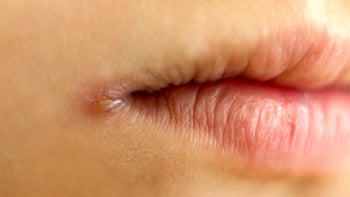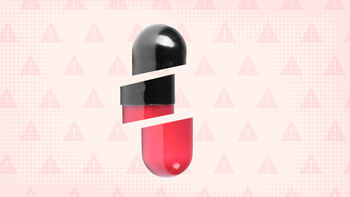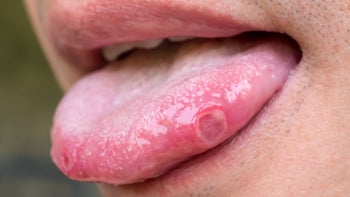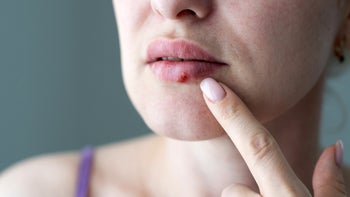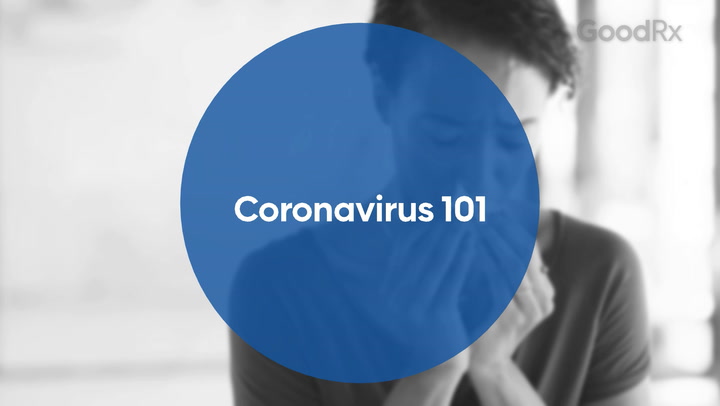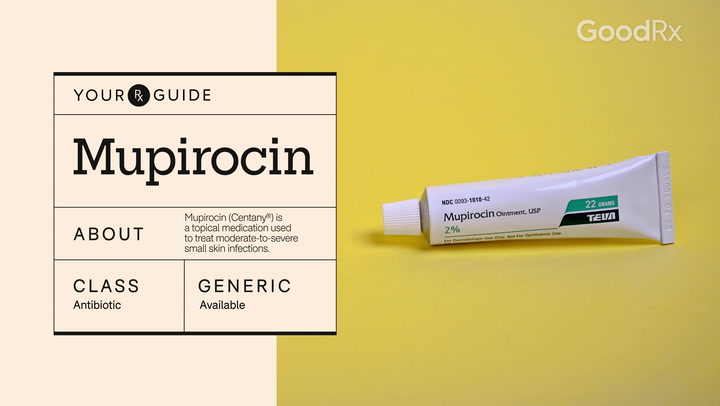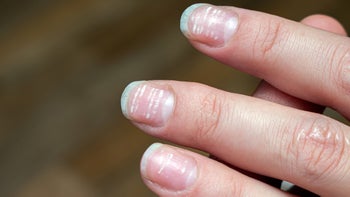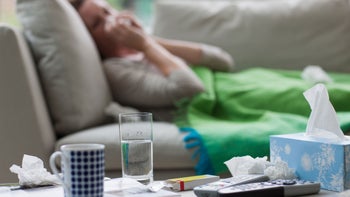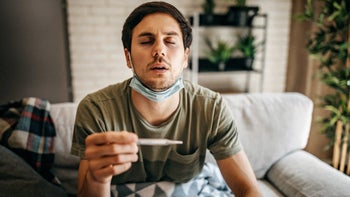
5 Self-Care Steps to Relieve Strep Throat Pain
Key takeaways:
Strep throat is a bacterial throat infection that needs treatment with antibiotics to prevent complications.
Most people start feeling better within 24 hours of starting antibiotics. But it can take up to 1 week for sore throat symptoms to go away completely.
Ibuprofen, cold fluids, and humidifiers can help temporarily relieve sore throat symptoms while antibiotics fight off the infection.
Access savings to related medications
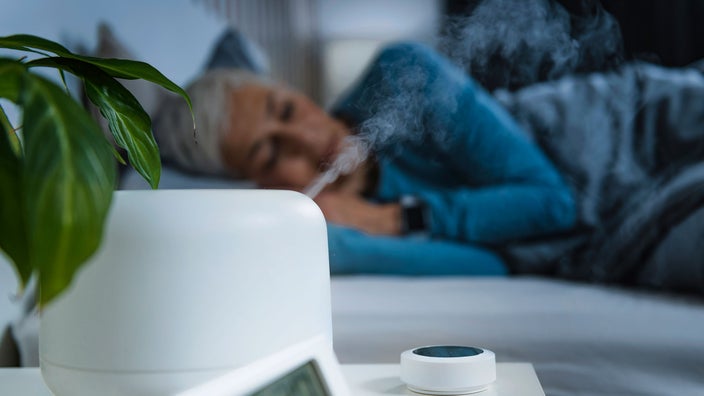
Between the sore throat and the fever, strep throat can be a miserable experience. Even small actions like swallowing can be overwhelmingly painful. If you or a loved one has been diagnosed with strep throat, you may be looking for ways to feel better as soon as possible.
It can take days for antibiotics and your immune system to fight off inflammation and bring lasting relief. In the meantime, there are home remedies and self-care practices that can make you more comfortable. Here are five self-care tips that can help you feel better faster.
What is strep throat?
Strep throat (streptococcal pharyngitis) is a bacterial infection of the throat and tonsils caused by group A streptococcus. The bacteria spreads from person to person through respiratory droplets. So a person with strep throat can pass the bacteria to others anytime they speak, cough, or sneeze.
Strep throat is more common in school-age children. But younger children and adults can get it too — especially if they live or work with school-age children.
Strep throat causes a sudden onset of fever and throat pain. Some people also notice swollen and tender neck glands, pain with swallowing, and a white coating on the back of the throat.
Younger children may experience lower fevers, fatigue, and inability to eat. Some people also develop a rash when they have strep throat, which is sometimes called “scarlet fever.”
When should you see a healthcare provider for strep throat?
You should always see a healthcare provider if you think you have strep throat. That’s because you should take antibiotics when you have strep throat.
While many people can better on their own, anyone with strep throat should take antibiotics. Antibiotics lower your risk of developing complications from strep throat by 66%.
These complications can be serious, like heart disease, rheumatic fever, and complicated throat infections. Taking antibiotics also makes you less contagious, so you’re less likely to spread strep throat to other people in your home, work, or school.
If you’ve been exposed to someone with strep throat, keep in mind that it takes between 2 to 5 days to develop symptoms. If you start feeling sick within that window, see a healthcare provider to get tested for strep throat.
WHAT TO READ NEXT
Popular stories this week
What self-care tips for sore throat can you try at home?
Most people start to feel better 1 to 2 days after starting antibiotics. But it can take up to 1 week for you to feel completely back to normal. In the meantime, you’ll need some help to keep you comfortable.
Here are five self-care tips that can help you feel better while your immune system and antibiotics fight off strep.
1. Take ibuprofen (Motrin)
Ibuprofen (Motrin) relieves pain and reduces inflammation, which can make it easier for you to eat and swallow. It will also bring down your temperature if you have a fever.
Start with the lowest recommended dose for your age or weight. If it’s not enough to give you relief, you can increase the dose to the higher end of recommended dosing. Make sure you don’t take more than 1,200 mg of ibuprofen in 24 hours.
For children, the recommended dose of ibuprofen depends on their weight and age. Your healthcare provider can give you the appropriate doses and maximum daily amounts.
You can try acetaminophen (Tylenol) if you can’t take ibuprofen because you’re pregnant or have a medical condition that can be worsened from taking ibuprofen. There’s some data that ibuprofen works better than acetaminophen for relieving sore throat. But if you can’t take ibuprofen, experts agree that it’s worth giving acetaminophen a try.
2. Eat soft and soothing foods
When you have strep throat, the back of your throat is swollen, inflamed, and prone to irritation. Crunchy foods tend to have sharper edges and can make things worse. Spicy, sour, or acidic foods (like citrus) can also worsen your symptoms.
Stick to soft and soothing foods until your throat recovers. Some of the best foods for sore throat include tried-and-true hospital favorites, like applesauce and Jell-O. Yogurt, mashed vegetables, and smoothies are also great options, but avoid berries because they contain citrus. You can also try soups and broths — just make sure they aren’t too hot so you don’t end up burning your throat.
3. Try a lozenge or honey
Lozenges and some throat sprays contain benzocaine or menthol, which can temporarily numb the back of the throat. This can provide you with pain relief so you can drink and sleep more comfortably. Keep in mind that benzocaine can also numb other parts of the mouth, like the cheeks and tongue. It’s not a good idea to eat while numb because you can end up injuring your mouth.
For children who are too young for lozenges, try a spoonful of honey instead. Honey works to relieve sore pain in adults, too. Not only is honey safe for anyone older than 6 months old, it’s completely natural and doesn’t come with any side effects. There’s no limit on daily dosing to worry about either — just take a spoonful whenever you need to.
If a spoonful of honey doesn’t sound appealing, you can add it to some warm tea. Just make sure the tea isn’t too hot so you don’t burn your throat.
4. Drink cold fluids
Cold fluids do double duty when it comes to relieving strep throat. First, cold fluids temporarily numb the throat, providing pain relief. Fluids also keep you hydrated, which is especially important when you’re sick and trying to fight off infection.
Sip cold fluids throughout the day to soothe your throat. You can stick with plain water or opt for flavored fluids. But avoid citrus. Cold smoothies and ice cream are other options that also provide some calories. If you’re not feeling well enough to stomach these, try ice chips and popsicles.
5. Turn on a humidifier
Dry air takes a toll on an inflamed throat. Moist air is easier to breathe in and won’t dry out your already irritated throat.
A humidifier can easily add moisture to the air in any room. If you don’t have a humidifier, you can still take advantage of the soothing benefits of humidified air. Try sitting in your bathroom for a few minutes after a shower to breathe in the steam.
You can also leave a couple of bowls of water out on counters and shelves. The water will evaporate (very, very slowly) if the air is dry. While this isn’t as effective as a humidifier, it still gets a little extra moisture into the air in your home.
Be sure to avoid things that dry out and irritate the throat more, like smoking and vaping.
The bottom line
Strep throat is a bacterial throat infection that causes fever and sore throat. Anyone with strep throat should take antibiotics to prevent severe complications. It takes between 2 to 7 days to feel better from strep throat, even if you take antibiotics.
To help soothe your throat in the meantime, you can try some self-care home remedies. Ibuprofen, menthol lozenges, honey, and cold fluids can give you temporary pain relief. Make sure to stay hydrated by sipping cold fluids, and opt for soft foods that won’t irritate your throat.
References
Bathala, S., et al. (2013). A review on the mechanism of sore throat in tonsillitis. The Journal of Laryngology and Otology.
Centers for Disease Control and Prevention. (2022). Strep throat: All you need to know.
Geißler, K., et al. (2020). The effect of adjuvant oral application of honey in the management of postoperative pain after tonsillectomy in adults: A pilot study. PLoS One.
Schachtel, B. P., et al. (1988). Sore throat pain in the evaluation of mild analgesics. Clinical Pharmacology and Therapeutics.
Shulman, S. T., et al. (2012). Clinical practice guideline for the diagnosis and management of group A streptococcal pharyngitis: 2012 Update by the Infectious Diseases Society of America. Clinical Infectious Diseases.
Spinks, A., et al. (2013). Antibiotics for sore throat. Cochrane Database of Systematic Reviews.
Thomas, M., et al. (2000). How effective are treatments other than antibiotics for acute sore throat? British Journal of General Practice.








